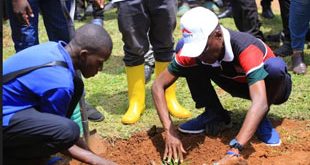The risk of a coup
With data from the Uppsala Conflict Data Program, we can identify where governments around the world have used force against civilians and also where rebel activity took place between 1989 and 2018.
We also used machine learning methods, including those employed by CoupCast, the premier scientific model for forecasting coups.
With this, we could predict the risk of a coup occurring, relative to other countries.
Scholars have found that the risk of coups is tied to major shifts in economic and political stability. Weak civil society, unregulated political competition and economic downturns all contribute to a rise in the potential risk of a coup. Coups often happen in bursts, so the time since the last coup matters, too.
As the estimated risk of a military coup rises, our models show a significant increase in government-sponsored violence. This is particularly true in parts of the country close to the capital.
When the risk of a coup is high, governments engage in more targeted killings of civilians in capital cities, as well as the surrounding district. Within the capital, a 1% increase in coup risk results in 20 additional civilian deaths by government forces a year.
Additionally, nearly all civilian deaths within the capital take place in countries in the top 25% of coup risk.
What this means for Sudan
The risk of a coup within Sudan has increased since al-Bashir’s forced exit from office, as compared to the days leading up to his ouster.
This is largely because past coups increase the risk of future coups, a fact that is not lost on the perpetrators of coups d’état.
Less than two months since the removal of al-Bashir, pro-democracy advocates within Sudan have called on the new regime to hand over power to a civilian government. Negotiations on a possible transitional power-sharing government have ended with no agreement, and demonstrators have increased their demands for the government to hand over power.
Our models suggest that, as the perceived internal threat grows within Sudan, protesters – particularly those in the capital – are at risk of being brutally suppressed, with violence only escalating.
The civilians killed on June 3 may just be the start of a more violent campaign.
****
 The Independent Uganda: You get the Truth we Pay the Price
The Independent Uganda: You get the Truth we Pay the Price


